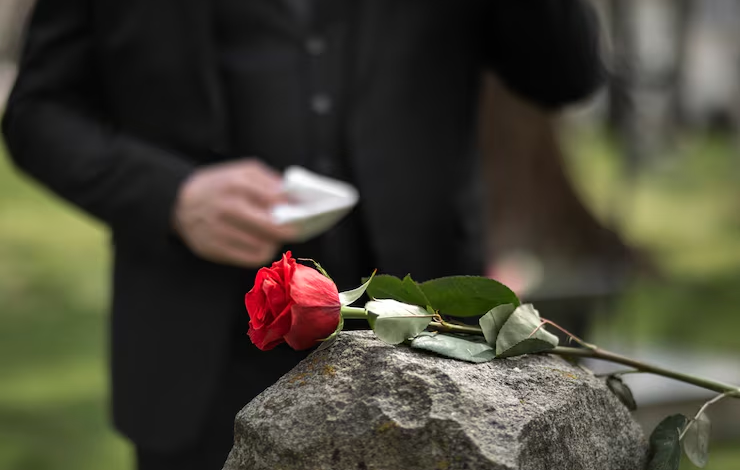Understanding Cremation Services in Las Vegas: A Complete Guide for Families

Death catches families off guard even when they know that it is an inevitable part of life. Even when you know it’s coming, the reality hits differently. Suddenly, there are forms to fill out, decisions to make, and everyone has an opinion about what’s “right.”
When you’re looking into Las Vegas cremation services, you want straight answers. Not sales pitches or confusing jargon. Just clear information to help you figure out what works for your family.
The Cremation Process Explained
Cremation burns the body at extremely high temperatures until only bone fragments remain. The facility uses a special furnace called a retort that heats up to around 1,800 degrees Fahrenheit.
It takes about two to three hours to complete. After everything cools down, workers remove any metal pieces like jewelry or surgical implants. Then they grind up the bone fragments into a powder.
Most people call it “ashes,” but that’s not really accurate. What you get back is mostly calcium phosphate, which is basically ground-up bone material.
Your Cremation Options in Las Vegas
You can choose from several different approaches depending on what feels right for your situation.
- Direct Cremation: This is the no-frills option. Your loved one gets cremated within a day or two, and you pick up the remains when they’re ready. No service, no viewing, just the cremation itself.
- Memorial Service Option: You can add a service before or after the cremation happens. This gives the family time to gather and say goodbye properly without rushing into burial decisions.
- Full Service with Cremation: Some families want the traditional funeral experience but choose cremation instead of burial. You get the viewing, the service, everything except putting a casket in the ground.
What You’ll Actually Pay
Money gets tight when someone dies unexpectedly. Cremation costs less than burial, but the prices still vary quite a bit around Las Vegas.
Basic direct cremation runs anywhere from $800 to $2,000. That covers picking up the body, the actual cremation, and giving you the remains in a simple box.
Adding memorial services pushes the cost up to $3,000 or $6,000. Complete funeral services before cremation can hit $8,000 easily once you add in all the extras.
Then there are the surprise costs nobody warns you about. Decent urns start around $100 and go up from there. Death certificates cost money, too, and you need several copies for insurance and legal stuff.
See also: Overcoming Homeschooling Gaps: Structured Primary Online Education You Can Rely On
Nevada’s Rules for Cremation
The state makes you wait 24 hours before any cremation can happen. This gives families time to get their paperwork together and make sure everything’s handled correctly.
A licensed funeral director has to deal with all the official forms and death certificates. The next of kin needs to sign off on the cremation authorization, and there’s a specific order for who gets to make that decision.
Crematories also have to follow strict rules about keeping track of remains. Your loved one gets an identification tag that stays with them through the whole process.
Finding a Good Cremation Provider
Some places handle everything at their own facility. Others ship bodies around to different locations, which might make you uncomfortable.
Ask if they offer alkaline hydrolysis, which is a water-based process that’s better for the environment. It uses way less energy than regular cremation and doesn’t produce emissions.
Look for places that belong to professional organizations. The International Cemetery, Cremation and Funeral Association certifies facilities that meet specific standards.
Make sure they give you transparent pricing upfront. Good providers list all their fees without hiding extra charges that show up later.
What Happens After Cremation
You typically get the cremated remains back within a week. They come in a basic container that you can keep or transfer to something nicer.
Nevada allows ash scattering in most places, but you need to check the rules first. National parks and some public lands require permits. Private property needs permission from whoever owns it.
Many families divide the remains so that different relatives can have some. Others choose permanent spots like cemetery niches or memorial gardens.
Should You Plan Ahead?
Pre-planning takes pressure off your family when they’re grieving. You can research options, compare prices, and make decisions when you’re thinking clearly.
Some companies let you pay in advance at today’s prices, which protects against inflation. The downside is that prepaid plans can be complex to change if your circumstances shift.
You also need to make sure your family knows about your plans and where to find the paperwork.
Environmental Impact
Regular cremation uses natural gas and electricity, which produce some pollution. The process also burns whatever container the body is in, adding to emissions.
Newer methods like water cremation use 90% less energy and create no direct emissions. The problem is that not many places offer these options yet, so your choices might be limited.
Making Your Decision
More Las Vegas families choose cremation every year. The main reasons are cost savings, flexibility with timing, and easier handling of remains.
Religious beliefs still matter for many people. Most Christian churches accept cremation now, but some families struggle with traditional ideas about preserving the body.
Your cultural background might influence the decision too. Some communities see cremation as normal, while others consider it inappropriate.
The choice depends on your values, what your family wants, and practical things like money and logistics.
Moving Through Grief
Cremation gives many families a sense of closure, but everyone grieves differently. Some people feel better after it’s done, while others need more time to process everything.
You can hold memorial services later when distant relatives can attend. This flexibility helps create meaningful remembrances without rushing essential decisions.
Remember that there’s no “right” way to handle loss; you only have to do what works for your specific situation.




